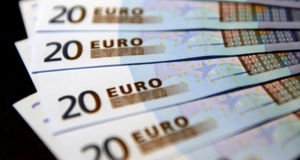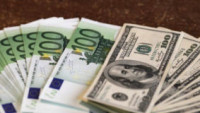 EURUSD found resistance at 1.1600 on Friday, turning back inside the Ichimoku cloud and under its 20 and 50-day (simple) moving averages (MA) early on Monday. The short-term bias looks neutral to bearish as the RSI moves sideways around its 50-neutral mark and the MACD is fluctuating in negative territory but close to its red signal line. The stochastics, though, are near overbought levels and are set to reverse south, suggesting that negative corrections are possible.
EURUSD found resistance at 1.1600 on Friday, turning back inside the Ichimoku cloud and under its 20 and 50-day (simple) moving averages (MA) early on Monday. The short-term bias looks neutral to bearish as the RSI moves sideways around its 50-neutral mark and the MACD is fluctuating in negative territory but close to its red signal line. The stochastics, though, are near overbought levels and are set to reverse south, suggesting that negative corrections are possible.
Should the price weaken, the 1.1500 round level could offer nearby support as it did in May and in June. Below that, the 3-week low of 1.1431 registered last week should come into view before eyes turn to the 1.1400 psychological level. If the latter fails to halt downside movements, traders would be interested to see whether bears are able to crash the wall around the one-year low of 1.1300, resuming the long term downleg from 1.2554 (February 2018).
Alternatively, if the market manages to jump above the 23.6% Fibonacci of the downleg from 1.2412 to 1.1300, immediate resistance could appear at 1.1600. Even higher, the area between the 38.2% Fibonacci of 1.1724 and 1.1800 where the price reached a peak several times from the end of May onwards could restrict bullish actions once again. If bulls successfully violate that zone too and more importantly pierce September’s top at 1.1814, the door should open for the 50% Fibonacci of 1.1854.
In the medium-term picture, EURUSD maintains a neutral outlook within the 1.1854-1.1300 range over the past three months. Any violation at the upper bound of the range would shift the picture to bullish, while any close below the lower boundary would switch the market’s profile into a bearish one.

Origin: XM













